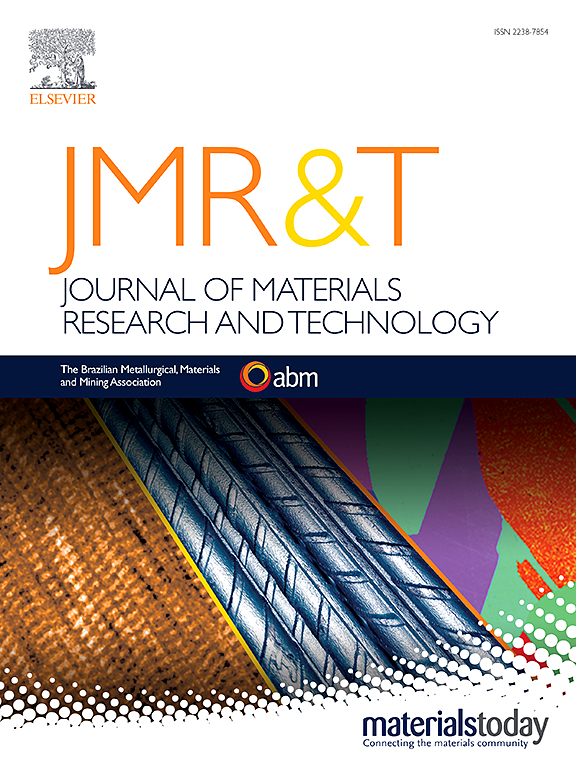Investigation on the fracture toughness of a low-density δ-quenching and partitioning steel sheet
IF 6.2
2区 材料科学
Q1 MATERIALS SCIENCE, MULTIDISCIPLINARY
Journal of Materials Research and Technology-Jmr&t
Pub Date : 2025-01-15
DOI:10.1016/j.jmrt.2025.01.108
引用次数: 0
Abstract
The low-density δ-quenching and partitioning (δ-QP) steels have been developed, showcasing excellent strength and ductility. However, studies on the fracture toughness related to practical applications still remain relatively scarce. In this work, the fracture toughness of 1180 MPa grade δ-QP steels was investigated using double edge notched tension (DENT) tests. The tempering treatment at 350 °C promotes carbon partitioning from martensite to austenite and ferrite, enhancing microstructural uniformity and reducing stress concentration, which significantly improve the fracture toughness of the QP1180 sample. In contrast, higher annealing temperatures for the QP1280 sample bring about a lower fraction of austenite at the final microstructure and consequently a reduced microstructural uniformity, and there also exists a greater hardness difference between martensite/austenite islands and ferrite; therefore, a lower fracture toughness is obtained compared to the QP1180 sample. On the whole, the QP1180 sample exhibits the highest fracture toughness across different ligament lengths, primarily due to its uniform microstructure and more remarkable transformation-induced plasticity effect. Finite element simulation further verifies the strain distribution characteristics during deformation. This study provides valuable insights into the fracture toughness and fracture mechanisms of low-density δ-QP steels; it is of significant importance for their practical applications.
求助全文
约1分钟内获得全文
求助全文
来源期刊

Journal of Materials Research and Technology-Jmr&t
Materials Science-Metals and Alloys
CiteScore
8.80
自引率
9.40%
发文量
1877
审稿时长
35 days
期刊介绍:
The Journal of Materials Research and Technology is a publication of ABM - Brazilian Metallurgical, Materials and Mining Association - and publishes four issues per year also with a free version online (www.jmrt.com.br). The journal provides an international medium for the publication of theoretical and experimental studies related to Metallurgy, Materials and Minerals research and technology. Appropriate submissions to the Journal of Materials Research and Technology should include scientific and/or engineering factors which affect processes and products in the Metallurgy, Materials and Mining areas.
 求助内容:
求助内容: 应助结果提醒方式:
应助结果提醒方式:


